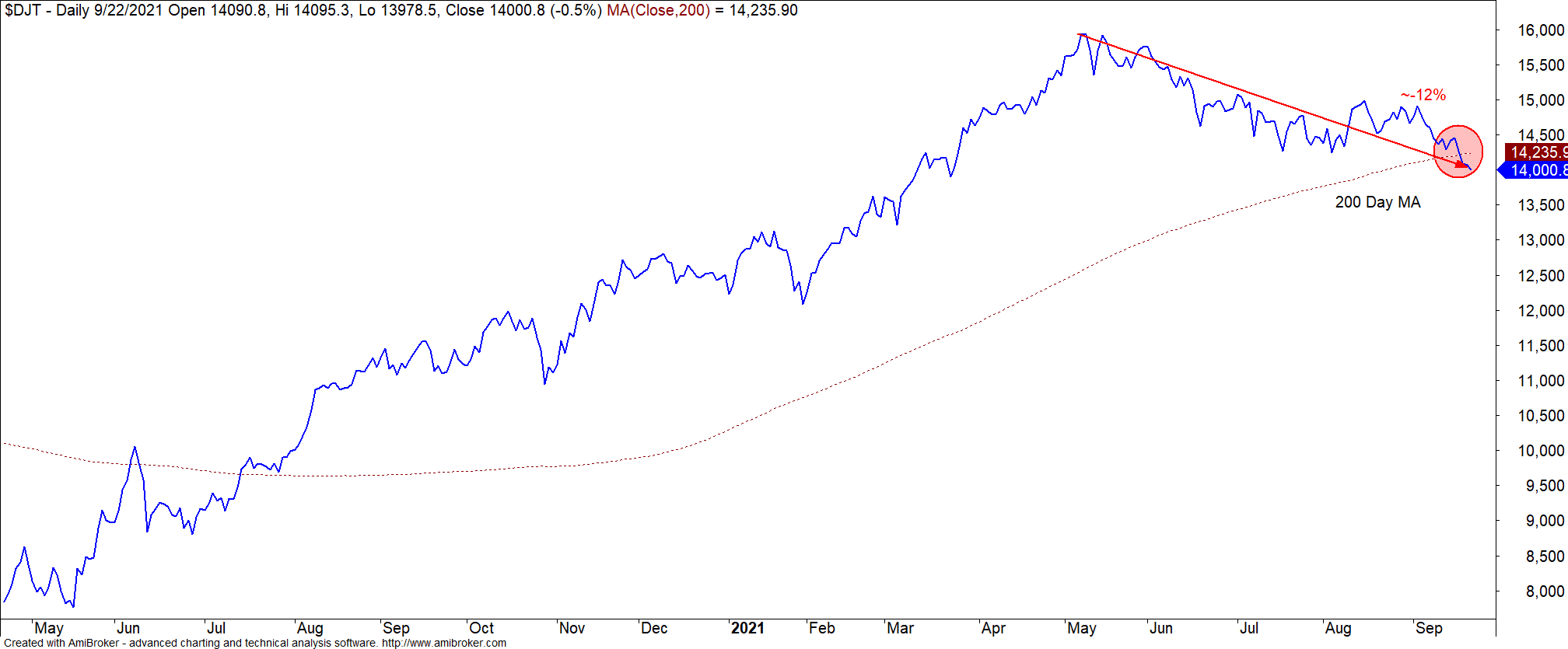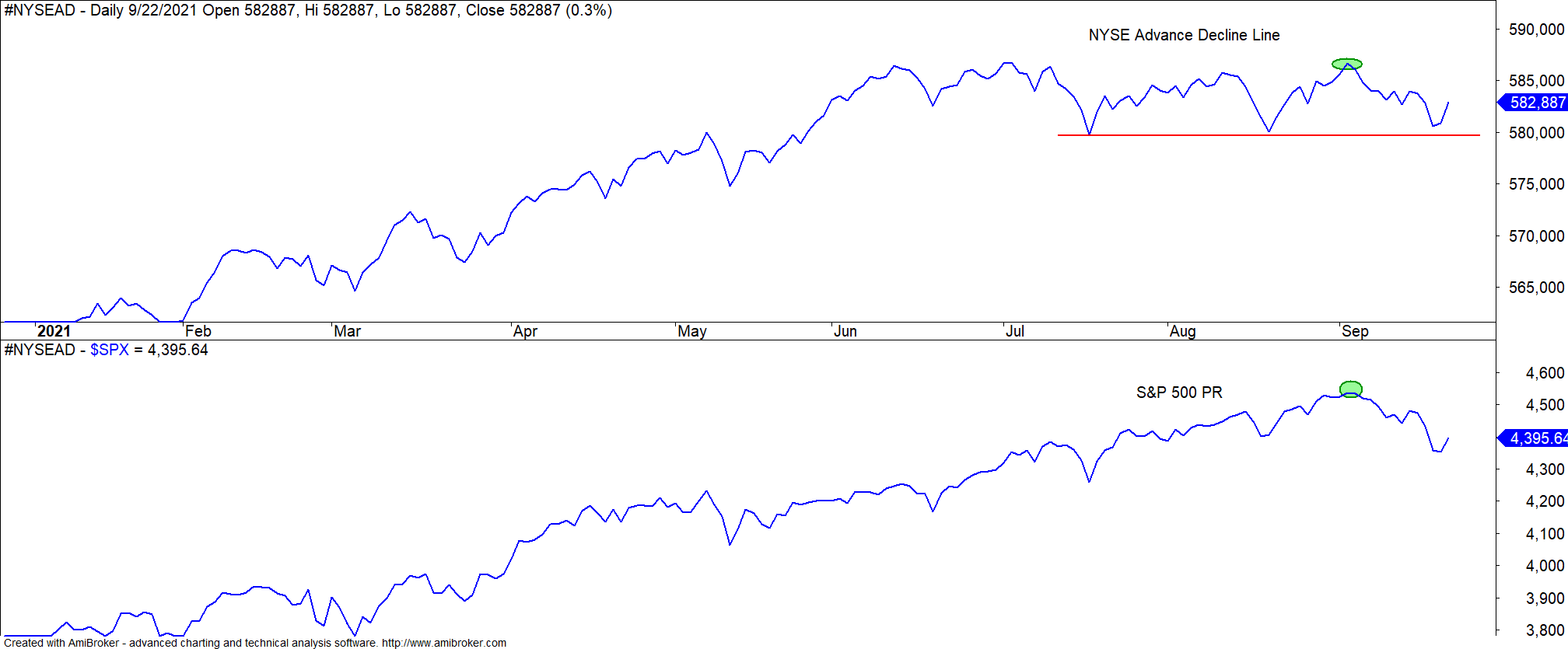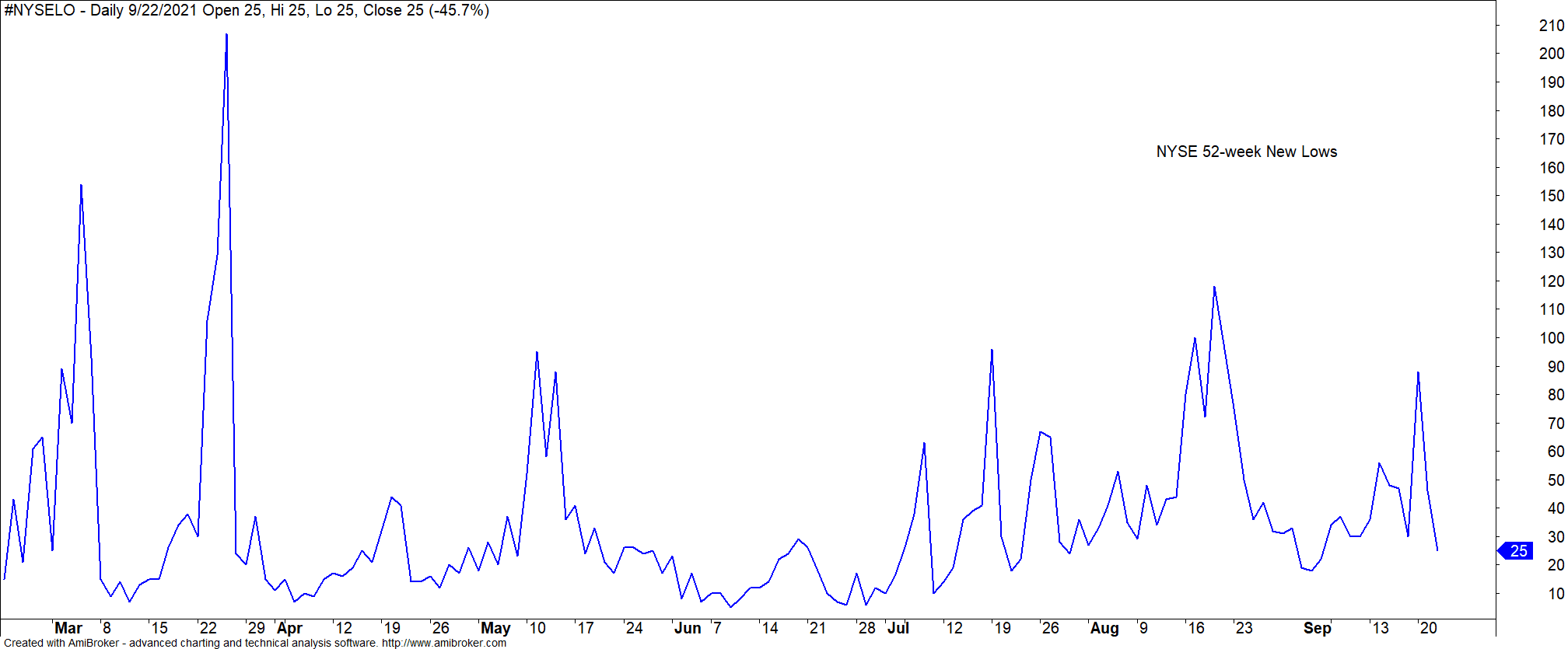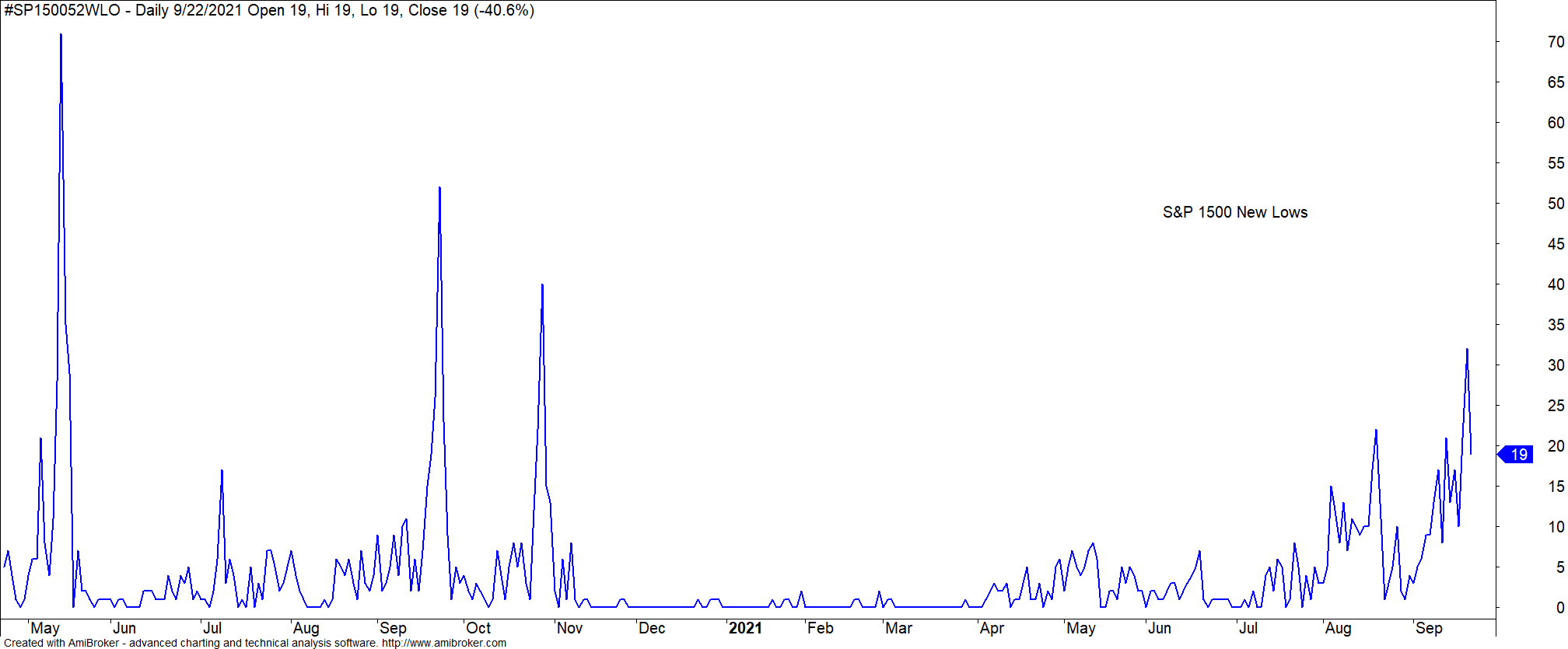
Key Points
- Transports are Moving in The Wrong Direction
- Breadth Doesn’t Care about Evergrande
- Math is a Very Important Subject
Chart in Focus
One of the tenets of Dow Theory is to pay attention to the divergence of the Dow Transports. The thought process purports that tracking the companies that “transport” goods is a leading indicator for the economy.
Younger technical analysis newsletter sellers, who don’t manage money, have argued that Transports no longer reflect the state of the economy and should be replaced with Semiconductors.
Tell that to my daily pile-up of Amazon boxes.
In my, not so humble, opinion Transports are still one of the most important leading indicators. When looking for trends, it’s not necessary for the Transports to confirm every market high, but they need to participate. It’s not good news for the Transports to fall apart and completely diverge from the market.
I would consider the current market action a large enough divergence and trend change to keep me up at night.
Since making a new high in early May, the Transports have continued to decline and make lower lows. They are now roughly -12% of their highs and recently crossed below its 200-day MA. This can’t continue if you want the market to scream higher.

NYSE Breadth
There are many ways to measure market breadth, but the only one that really matters is the NYSE AD Line. This is a hill I am willing to die on.
For the last couple of months, the AD Line has been bouncing sideways while the S&P 500 was grinding higher.
However, in early September, when the S&P made another all-time high, it was confirmed by the AD Line, which is a huge positive for future market gains. Remember, small divergences don’t matter unless they are confirmed by price!
Since early September, ATH both indices have declined in lockstep. On a very short-term basis, the NYSE AD Line is leading the market higher from the recent low. But it’s so short-term I feel dirty even writing about it.

My favorite shirt says, “math is the only subject that matters,” and there is no better example of this than the NYSE 52-week New Lows.
Deeper market declines simply do not occur without a spike in NYSE 52-week New Lows.
If a market pullback occurs does not have a corresponding spike in New Lows, then chances are high that it will be short-term in nature.
During the recent baby pullback, the New Lows didn’t even get above 100.
Yawn…

S&P Breadth
I like the S&P 1500 because it covers the gambit of market capitalization since it is a combination of three widely followed indices—the S&P 500, S&P MidCap 400, and S&P SmallCap 600.
The breadth non-story continues with this index as well.
The 52-week New Lows barely got above 30. For reference’s sake, at the end of February 2020, before the deeper March decline, this number was at 333.
Yawn…

Take-Aways:
If your job is to “write” about technical analysis, you typically find data points that fit your narrative. For us, the saying goes, “if it can’t be tested, then it can’t be trusted.” We look for divergences that can be historically tested and validated to show predictive qualities with a high success rate.
Right now, when it comes to breadth, there is nothing that we would consider a worrisome data point.
